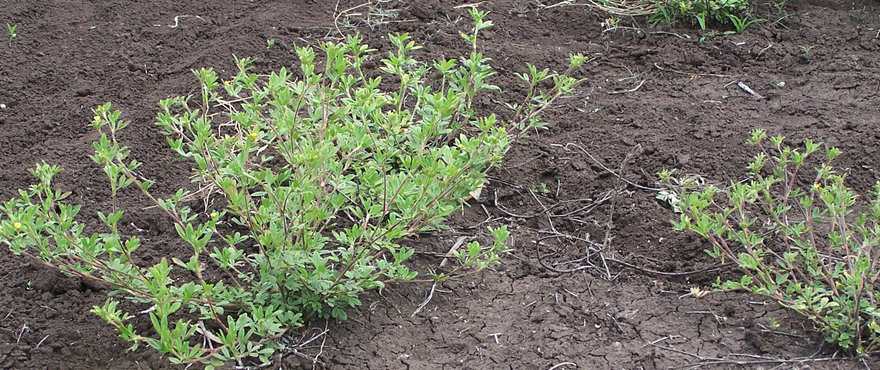Shrubby stylo is native to South America in Northwest Argentina, Bolivia, Brazil, Colombia, Ecuador, Guyana, Peru, Venezuela and also in the Caribbean in the Bahamas & Cuba. Siran is a more leafier variety than Seca, and is a composite of 3 bred or selected lines (‘Jecuipe’, ‘Recife’, ‘Feira’) to provide multiple-gene resistance to anthracnose. Siran is adapted to a wider variety of conditions when compared to Seca, and produces a large quantity of highly nutritious feed for the dry season. Used in perennial pasture, in grassland or open woodland. Although sometimes sown with introduced grasses, it is most commonly sown into native grassland. Used for cut-and-carry in some countries. Young regrowth has qualities that suggest value for fodder conservation. Agro forestry potential, providing shade not too intense. Well adapted to infertile, acid, friable or hard-setting, sandy-surfaced soil; not as well adapted to heavier textured, less acid soils, and not suited at all to heavy clays. A shrubby legume, that can grow up to 2m tall. Under heavy grazing, plants can adopt a low, almost prostrate growth habit, to 5 to 10cm high. Siran has a large tap root to 4 m deep.
Establishment
Recommended planting rates for AgriCOTE Siran Stylo are: 2 - 5Kg per Hectare Since seedlings are slow to develop, it is best to sow at the end of the dry season or early in the wet season to allow plants to develop sufficiently before the next dry season or the onset of frost. Siran can be sown conventionally into the soil, or by air. In tropical Northern parts of Australia, Siran Stylo is also commonly included in “loose lick” fed during the dry season, and readily establishes in the dung.
Variety Management / Agronomy
While seedlings are very slow growing for the first season, they are particularly hardy and able to establish unless grass competition is strong. In the establishment year, grazing pressure should be managed to minimise grass competition, but the stand should not be heavily grazed once plants start to flower, to encourage seed-set and stand thickening. In subsequent years, it is best to avoid heavy grazing in the early part of the season, since stock select the grass leading to grass decline and stylo dominance. This can lead to weedy pastures and soil acidification. However, it may be advantageous to graze heavily following burning and oversowing to reduce competition for the developing seedlings from established perennial grasses.
Pest / Disease Resistance
Shrubby stylo truck borer can cause significant damage in pastures and seed crops. The main diseases of stylos generally are anthracnose and botrytis head blight. Siran stylo shows greater anthracnose tolerance than the other commercially available variety, Seca, Violet root rot has led to stand reduction in the sub-humid subtropics during cool, wet conditions.
Performance
Dry-matter yields on poor soils in a low rainfall area may be less than 1 t/ha, but up to 10 t/ha under more ideal conditions. In grass/legume pastures it can contribute 2-7 t/ha DM.
Animal Production
Annual liveweight gains of 140-160 kg/hd can be achieved from grass/legume pastures. Nutritive value declines with age, leaf crude protein from 20 to 10%, P from 0.3 to 0.1% and IVDMD from 70 to 50%. ADF values of about 30 % in the leaf, and 43% in the stem of the terminal 15 cm of shoots have been measured. Proportion of stem increases with age, from about 20% early in the growing season to 75% at the end of the season (and higher in grazed pastures). This varies considerably with ecotype. Often need supplementary P to achieve best animal performance. Na levels are much higher than those for many other tropical legumes and may be 1-2 % of DM in leaf and stem.
Toxicity
No record of toxicity.
Disclaimer: The information presented in this brochure is from official and other sources and is considered to be reliable. It is provided in good faith and every care has been taken to ensure its accuracy. Barenbrug does not accept any responsibility for the consequences that may arise from the acceptance of recommendations or the suggestions made.



